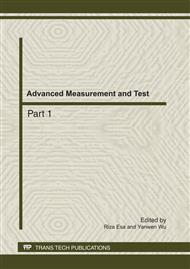p.347
p.352
p.357
p.361
p.366
p.373
p.377
p.384
p.388
The State-of-the-Art Surveys for Application of Metal Magnetic Memory Testing in Remanufacturing
Abstract:
Metal magnetic memory(MMM) testing has been used in the residual life prediction of remanufacturing cores. The MMM testing is one of the most promising nondestructive testing methods for achieving early diagnosis on micro defects of remanufacturing cores. This method can not only detect the traditional macro-cracks, but also identify the micro-damage caused by stress concentration. The principle of MMM testing works in the conditions that without requiring of the external exciting magnetic field, the magnetic field distribution of the inspection surface is scanned and measured by means of magnetic mutation signals to find the possible existence of stress concentration and location of micro-cracks. This paper presents a state-of-art survey about MMM testing mechanism and application of MMM method in Russia, Britain, China and the other countries. It includes the applications of this method in power station turbine blade damage detection by Russia scholars, evaluating the gear creep damage by Polish scholars and detecting the stress concentration districts of the train wheels damaged parts by Chinese scholars. The paper also reports that Chinese scholars developed methods of using MMM testing to characterize initiating and growing of fatigue cracks, and applied this method for prediction of residual life of remanufacturing cores. Based on the comprehensive survey, this paper points out further trends of the research work in the area. The paper also points out that microscopic physical mechanism of the MMM phenomenon and application of MMM testing in defining the manufacturability of remanufacturing cores should be further studied. Introduction
Info:
Periodical:
Pages:
366-372
Citation:
Online since:
July 2011
Authors:
Price:
Сopyright:
© 2011 Trans Tech Publications Ltd. All Rights Reserved
Share:
Citation:


